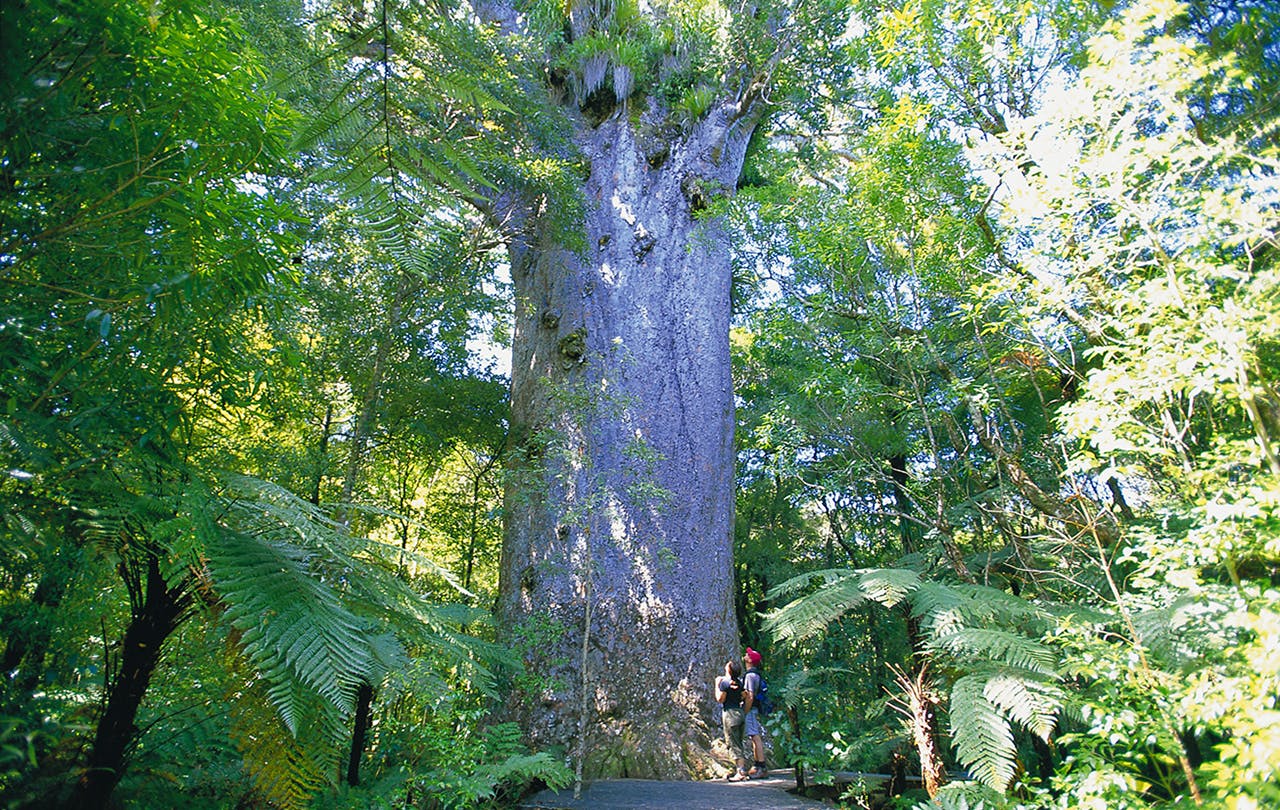The permanent closure of 10 walking tracks in Northland’s Bay of Islands to stop the spread of kauri dieback has been welcomed by local conservation groups and kaumātua.
The Department of Conservation announced in July that it was permanently closing seven tracks in Puketi Forest along with two in the Russell-Ngaiotonga Forest and one in the Omahuta Forest.
DOC’s acting Bay of Islands operations manager Martin Akroyd says after consultation with treaty partners, a decision was made to close certain high-risk tracks to protect local kauri.
“We urge the public to respect the closures and no longer access these tracks, otherwise they’ll be putting our kauri at great risk.”
Kauri dieback is a disease caused by a microscopic fungus-like organism, called phytophthora agathidicida (PA). It lives in the soil and infects kauri roots, damaging the tissues that carry nutrients and water within the tree, effectively starving it to death. It can be spread by people, pigs, goats, cattle and horses.
Ian Wilson is a trustee on the Puketi Forest Trust, a volunteer-run restoration project which has been working since 2003 to eradicate introduced pests from the 5500ha of rugged bush.
Wilson says the trust is generally supportive of the track closures.
“The protection of kauri comes first, and we need to do everything we can to protect the kauri,” he says.
But he is disappointed the Waihoanga Gorge Kauri Walk was permanently closed rather than trying to keep it open by carrying out mitigation work.
“It’s an outstanding walk,” Wilson says. “It goes through a good cross-section of flora in Puketi – there are 49 different ferns on the walk. The track is already metaled most of the way and there are boardwalks around quite a few kauri. To upgrade it to protect the other kauri wouldn’t be that expensive.”
Te Uri o Hua kaumātua Ted Wihongi says he and other kaumātua he’s spoken with generally support the effort that’s going into protecting kauri from the pathogen.
“We have to be alert and protective about our forests especially around things like kauri dieback and pesticides,” he says.
“I support any measures that will enhance the health and wellbeing of our forest life.
“The life of our forest is certainly always on our radar, and the relationship that Māori have with our whenua, that’s so important. When that dies, we’re going to feel it.”
Northland is famous for its giant kauri trees, notably Tāne Mahuta.
New Zealand’s largest kauri tree located in Waipoua Forest is so far free of kauri dieback, but the pathogen was found just 60m away late last year.
A DOC spokesperson said since the department began its Kauri Dieback Recreation Project in 2014, 265 tracks, roads, car parks, historic sites and campgrounds have been inspected, 76 tracks have been improved to mitigate the risk of spreading kauri dieback and 44 tracks have closed.
The work is across all kauri lands, from Kaitaia to Hauraki.
The permanently closed tracks in the Bay of Islands are:
Puketi Forest: Mangahorehore Track, Onekura Track, Pukekohe Stream Track, Upper Waipapa River Track, Walnut Track, Waihoanga Gorge Kauri Walk and Takapau Track.
Omahuta Forest: Omahuta Kauri Sanctuary Walk.
Russell-Ngaiotonga Forest: Kauri Grove Walk and Twin Bole Kauri Walk.







